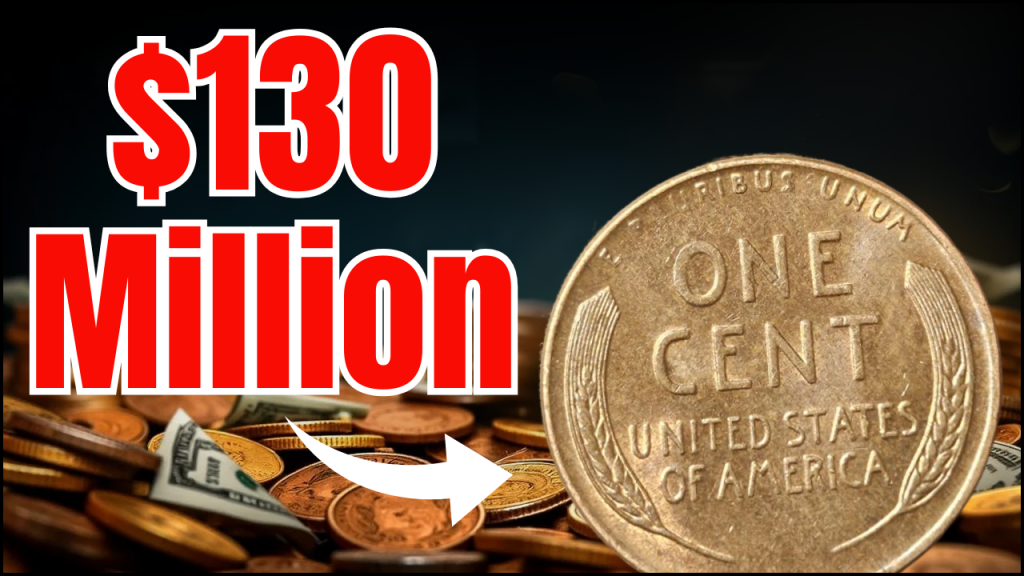
The Lincoln Wheat Penny is more than just a common coin. For some lucky people, it could be worth millions. Though most Lincoln Wheat Pennies are valued only at one cent, a rare few hold exceptional value. From coins minted in unique years to those with mistakes, these pennies are treasures in the world of coin collecting. In fact, some collectors speculate that one could fetch as much as $130 million. But what makes certain Lincoln Wheat Pennies so valuable, and how can you spot one of these gems? Let’s dive into the story of this iconic coin, which holds more than just monetary worth it’s also a part of American history.
Overview of the Lincoln Wheat Penny
The Lincoln Wheat Penny was first minted in 1909 to mark the 100th anniversary of President Abraham Lincoln’s birth. It holds a place in U.S. history for being the first coin in the U.S. to feature the portrait of a real person, Lincoln. This particular coin was designed by a Lithuanian-born sculptor named Victor David Brenner, and it remains one of the most recognized pieces of currency in American numismatic history.
The coin features President Lincoln’s face on the front and two stalks of wheat on the reverse side. These symbols, Lincoln representing leadership and the wheat symbolizing agriculture—were chosen to reflect the national spirit of the time. The coin was minted until 1958, during which many different years saw interesting variations of the coin. It is these variations that play a key role in the coin’s potential value.
Why Are Some Lincoln Wheat Pennies Worth So Much?
While many Lincoln Wheat Pennies may appear ordinary, certain rare varieties can be worth much more than just a penny. The following factors contribute to a coin’s high value:
1. Rarity
Some years or versions of the penny are much rarer than others. For example, in 1943, due to World War II, the U.S. faced a shortage of copper, so most pennies that year were made of steel. However, some were accidentally made of copper, making them incredibly rare and valuable to collectors.
2. Historical Significance
The historical context of a coin can play a huge role in determining its worth. For example, pennies minted during the Great Depression or during wartime may carry historical weight and value.
3. Condition of the Coin
The condition of the coin matters a lot. A coin in mint condition or almost perfect condition is worth far more than one that has been worn or damaged over time.
4. Mint Errors
Some coins have manufacturing errors, like misprints, wrong engravings, or off-center strikes. These error coins are rare and highly sought after by collectors, adding to their worth.
The Lincoln Wheat Penny Valued at $110 Million, Still in Circulation
Two Rare Bicentennial Quarters That Could Land You $85 Million
A $51 Million Lincoln Wheat Penny, The Rare Treasure Still Circulating
The $130 Million Lincoln Wheat Penny
A penny worth $130 million? While that might sound impossible, some experts believe that a combination of rarity, exceptional condition, and historical importance could cause a Lincoln Wheat Penny to reach astronomical figures in the future.
Although no Lincoln Wheat Penny has been officially sold for $130 million, the prospect isn’t out of the question. For instance, if a unique penny were discovered with a historic link to a famous person or event, combined with perfect preservation, it could rise in value dramatically, fueled by demand from collectors who are willing to spend big. Still, this amount is merely speculative and based on collector’s interest.
How to Identify a Rare Lincoln Wheat Penny
If you’re lucky enough to find a Lincoln Wheat Penny, how can you tell if it’s valuable? Here are a few tips for spotting a rare coin:
| Factors to Look for | Details |
|---|---|
| Year of Minting | Certain years, such as 1909, 1914, 1922, 1931, and especially 1943 (the copper variety) are among the most sought after. |
| Mint Mark | Coins minted in different locations have specific marks. “D” means Denver, “S” means San Francisco, and no mint mark is for Philadelphia. |
| Material of the Coin | Most pennies are made of copper, but the 1943 pennies were mostly steel. Use a magnet to check whether a penny is steel (which will stick) or copper. |
| Mint Errors | Coins that feature mistakes, such as double dies, blurred details, or off-center strikes, are significantly more valuable. |
| Condition of the Coin | The cleaner and more perfect the coin, the higher its value. Look for coins that have no scratches, corrosion, or damage. |
Are Lincoln Wheat Pennies Still in Circulation?
Yes, it’s still possible to find a Lincoln Wheat Penny in your spare change today. Though it’s rare, many people overlook these coins because they’re no longer in production. If you have a collection of pennies, especially from older dates, it’s worth taking a closer look. You could have an untapped treasure sitting in your pocket change.
Understanding the Thrills of Coin Collecting
Coin collecting, known as numismatics, is more than just a hobby—it’s a journey into history. Collecting Lincoln Wheat Pennies allows collectors to dive into American history, holding physical pieces that represent key moments in time. The excitement of discovering a rare coin makes it a thrilling experience, with some collectors even making significant profits from their finds.
For others, it’s about building a collection that speaks to a personal connection to the past. Whether it’s the artistry of the design, the stories behind each minting, or the coins’ historical significance, coin collecting brings value beyond money.
Protecting and Selling Your Rare Coins
If you’ve found a valuable Lincoln Wheat Penny, take care of it to protect its worth. Here are a few tips on handling and selling rare coins:
| Tips for Protecting Your Coin | Steps to Take |
|---|---|
| Don’t Clean the Coin | Cleaning coins can scratch and devalue them. Leave the coin as is to retain its worth. |
| Proper Storage | Store your coins in protective holders to avoid physical damage from dirt or moisture. |
| Have It Graded | Get your coin graded by professionals like PCGS or NGC, which will certify its authenticity and value. |
| Consult Experts | Professional coin dealers or auction houses can help assess your coin’s worth and suggest selling avenues. |
Conclusion
The Lincoln Wheat Penny is a true American icon. While the typical coin is worth just one cent, certain versions, with a touch of rarity and history, could fetch millions. Whether you’re a serious coin collector or just someone curious about their hidden value, there’s always the chance to discover a rare treasure that’s been hiding in plain sight. Always take a moment to examine your pennies—what seems like spare change could turn out to be worth more than you ever expected.
FAQs
1. Are all Lincoln Wheat Pennies valuable?
Ans: No, most Lincoln Wheat Pennies are worth only a small amount. Only specific versions from certain years or with unique features (such as mint errors or historical significance) hold significant value.
2. How can I tell if a penny is a rare 1943 copper penny?
Ans: The 1943 copper penny is often mistaken for the regular steel pennies from that year. The easiest way to tell is to use a magnet. Steel pennies will stick to the magnet, while copper pennies will not.
3. How do I sell a rare coin for the best price?
Ans: Get your coin graded, keep it in good condition, and consult with experts or professional coin dealers. An auction house can also help if you’re looking to sell to serious collectors.


